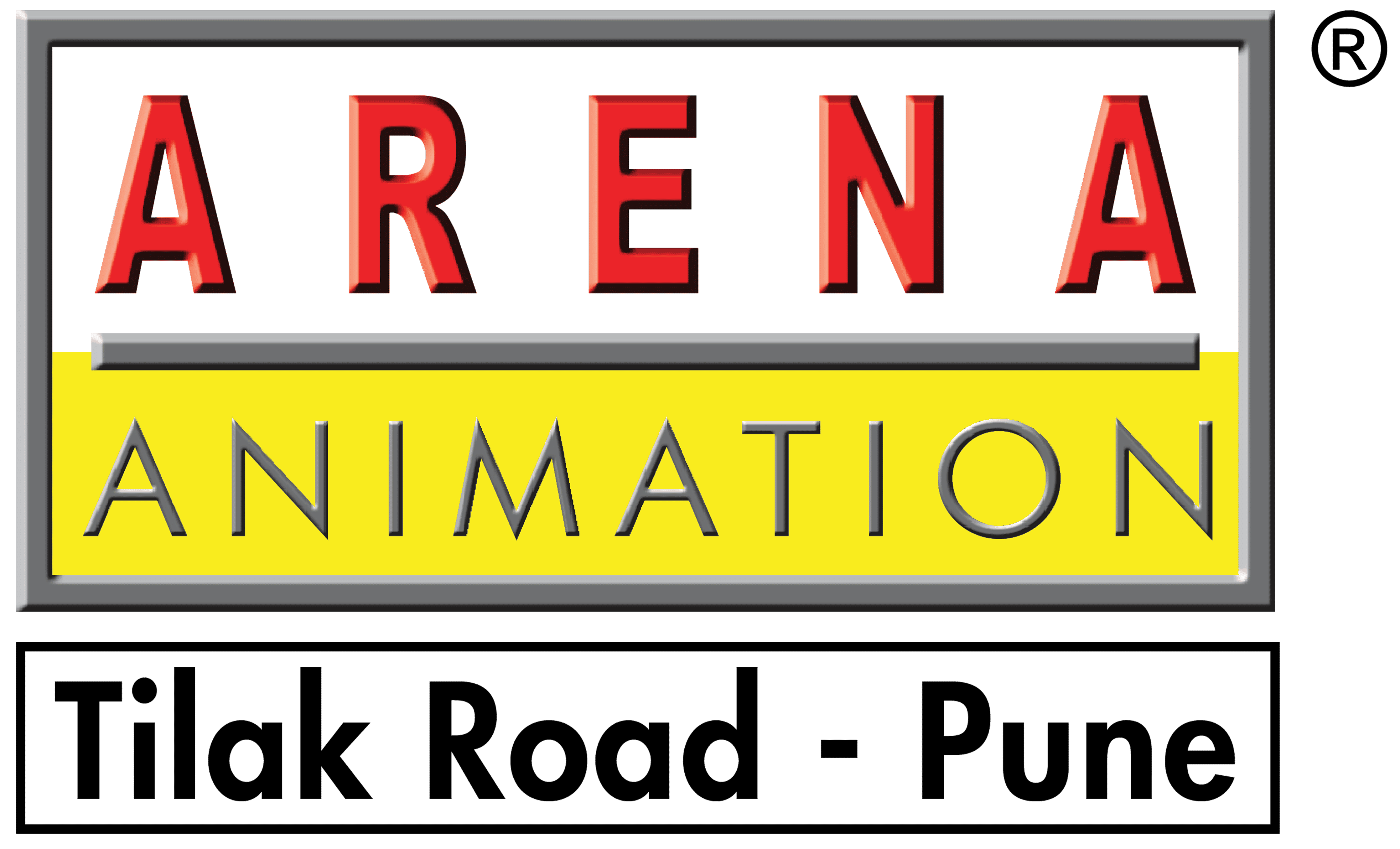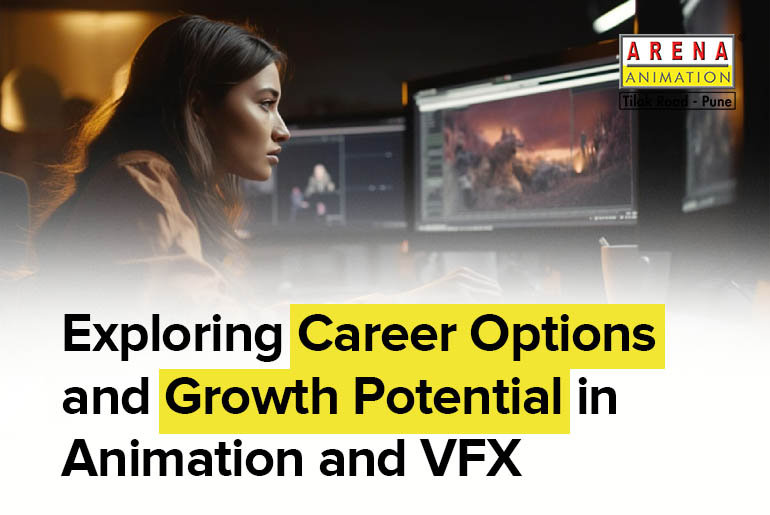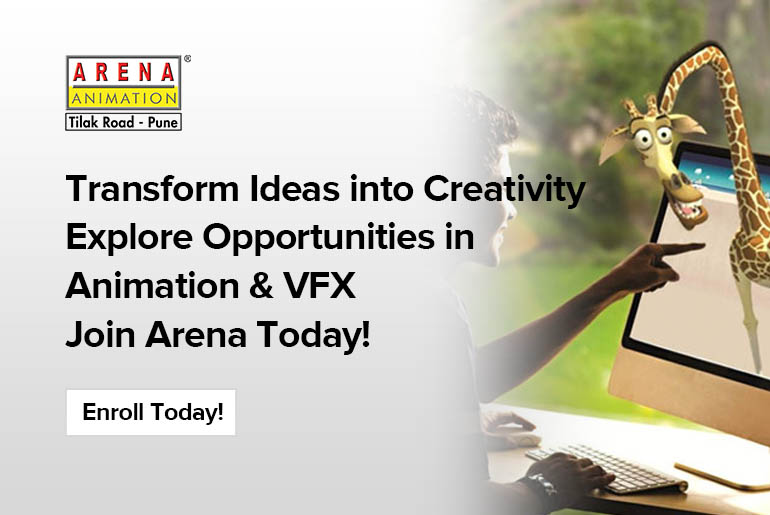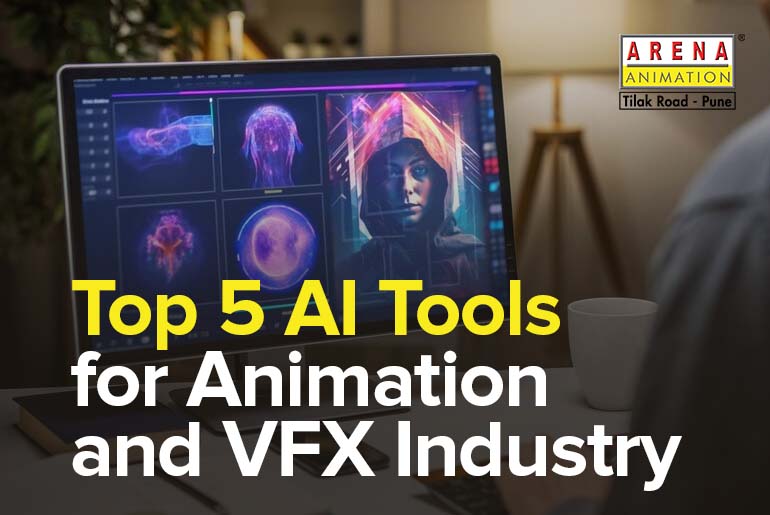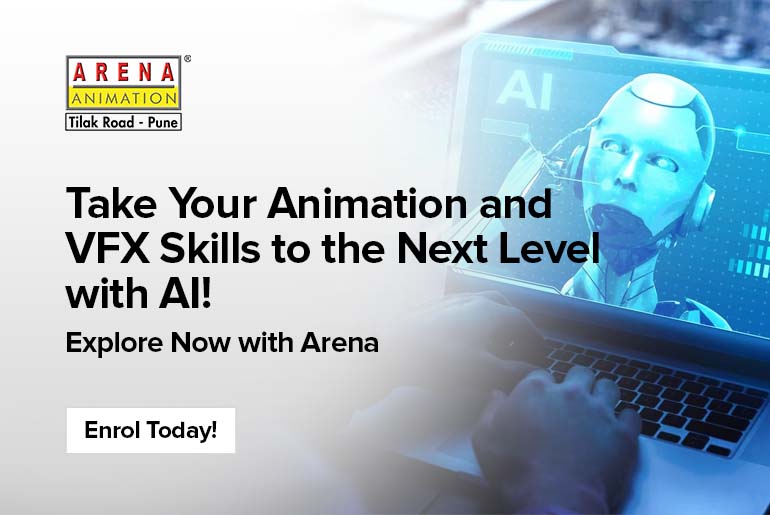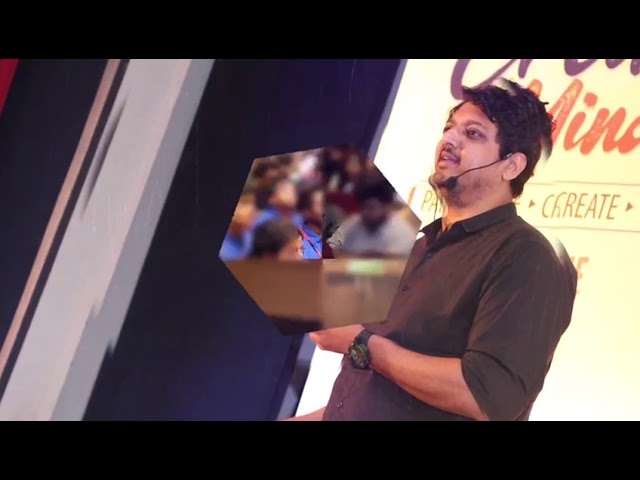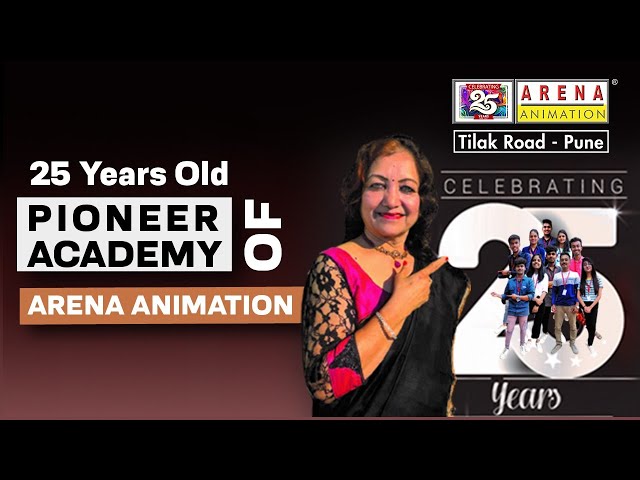The VFX and animation industry has gained too much popularity in the past few years. Fascinating cartoons with dramatic visual effects and transformation are in high demand in the entertainment industry. The growing demand for OTT and animation by all age groups is rising tremendously, leaving the VFX industry on the track of the fastest-growing sector.
As per the market report, the global VFX market is expected to rise from USD 11,333 million in 2018 to USD 23,854 by 2025. However, Statista has seen substantial growth in the VFX and animation industry from 2016 to 2019, from USD 39 – 68 billion. Furthermore, the growth will reach 147 billion USD by 2024.
The VFX and animation have created a relevant space in the education, gaming, and marketing sectors apart from the entertainment industry. They are creating a wide range of possibilities for the VFX and animators as visual effect designers. Therefore, it is worthwhile to say that the Indian and International markets both have immense potential growth opportunities for animators and VFX artists.
What is the animation and VFX course?
We all have grown up after watching cartoons such as Tom & Jerry, and Mickey Mouse. Have you ever questioned how these characters come to life? Yes, the answer is animation and VFX.
Animation is the digital technique that can move any 2D or 3D image giving it a realistic appearance. On the other hand, VFX is a fascinating technique that adds visual effects and transformations to these animated characters to appear more appealing to the viewers. The course in animation and VFX incorporates learning the tools and techniques that help the artist create effective and visually appealing graphics and motions.
Career Opportunities in Animation and VFX
Many opportunities are available for animation and VFX artists in entertainment, education, advertising and commercials, real estate, gaming, and so on. Some of the career opportunities after pursuing the animation and VFX course are listed below:
Post-Production Career Opportunities
- Compositing Artist: Composting is the last step of VFX. A composting artist combines all the 2D and 3D elements of the motions with the help of digital materials such as computer-generated images, live-action footage and matte paintings so that they form cohesive images or shots.
- Rigging Artist: They are in charge of developing, maintaining, and expanding Rigs for a wide range of props, vehicles, characters, and other CG objects that require animation. Rigging is the digital framework of the animation that controls the animation.
- VFX Supervisor: They take control of the entire VFX project. They are responsible for maintaining the VFX pipeline and workflow process. They take hold from the start of the project and play a crucial role in the development process of any project.
- Matte painters: They are the one who creates realistic images in the computer-generated 3D environment which is impossible to create in real life.
- Motion Graphic Designer: Motion graphics designers use animation, music, and visual effects to generate moving content and graphics. They collaborate with creative teams to include design aspects in their projects.
- VFX artists: They integrate visual effects into live-action in films, television and online gaming.
- Animator Render Wrangler: Render wranglers, also called “technical resource administrators” monitor the computers to ensure the data input and output across various file systems and initiate data moves to allocate disk space. They coordinate with animators, producers, supervisors, resource managers, and artists for effective work.
Pre-Production Career Opportunities
- Character Animator: A character animator is a 3D animator who creates and designs characters using animation tools and techniques.
- Storyboard Artist: They picturise the script and the director’s idea. The artist is responsible for creating a series of images to show continuity between the shots.
- Background Artist: They are responsible for giving colour, style, and mood to the scene drawn by an animator.
- Content Developer: They match the dialogue with the animation characters and provide progress updates.
- Concept Artists: They give visual concepts to the script. They set the tone and style of the work that gives life to an abstract idea.
- Layout Artist: A layout artist organises the visual structure according to the script.
Exploration of Job Opportunities in Various Sectors
The Indian animation and VFX job market has seen tremendous growth in recent years. With a large population of the younger generation in the country, the demand for animation and VFX is increasing day by day. Some of the thriving industries in animation in India are as follows:
- Real Estate: Animation and VFX are becoming integral parts of the real estate sector. The virtual representation of the project is one of the most significant parts of today’s real estate business. The animators and VFX artists create models using the tools of animation that appear visually appealing and help users select the best property.
- Advertising: It is a million-billion-dollar sector. The digital marketing platform of the advertisement demands more and more VFX artists to make their ads appealing.
- OTT platforms: With the rise in the use of OTT, the demand for VFX artists and animators is increasing.
- Video Gaming: Youth are more attracted towards the games. New games are created daily to fulfil their demands.
- Film and television: It is the major employment sector for VFX and animation. Movies, ads, cartoons, TV serials, and so on use visual effects to create user-engagement videos and films.
- Education and training: Innovative learning methodologies with 3D effects are used for a better understanding of the subjects giving the opportunities for employment to the animation and VFX artists.
Conclusion
Animation and VFX industries are growing at a fast pace with numerous career opportunities spread across all the sectors. Pursuing a course in animation and VFX can be a boon to your career graph as it will elevate your creativity. Furthermore, with the easy availability of the internet and more indulgence of kids in animation, the demand for animators is growing at a tremendous rate. Arena Multimedia has been among the top animation and VFX institutes providing multimedia education for the last 25 years. The institute offers long-term and short-term courses in animation and VFX in collaboration with the leading animation industries so that the learners get the real-time application of the theory.
Frequently Asked Questions (FAQs)
-
What is the future of VFX and animation?
Animation and VFX have a bright future as the industry is booming at a tremendous rate. The international Visual Effects (VFX) market was valued at USD 9884.95 million in 2022 and is predicted to grow at an 8.05% CAGR, reaching USD 15731.43 million by 2028.
-
What is the scope of animation and VFX?
VFX and animation artists can find jobs in sectors such as entertainment, education, media and advertising, real estate, and so on. Some of the job opportunities after the course are composting artists, graphic designers, storyboard artists, content creators, concert developers, etc.
-
What is the future of VFX jobs?
The rise in demand for VFX jobs is increasing as the demand for visual effects is now not only confined to entertainment, it has expanded its horizons in education, healthcare, real estate, advertising, and so on.
-
What is the future scope of the animation industry?
In 2022, the global animation industry was valued at approximately USD 394.6 billion. The sector is expected to be worth USD 528.8 billion by 2030, assuming a 5% compound annual growth rate.
-
Does animation have a future in India?
The future of animation in India seems to be brighter. The demand for animation is increasing with the rising use of the digital platform. The projected growth of the VFX and animation industry in India will be around 18% CAGR between 2021-26.
